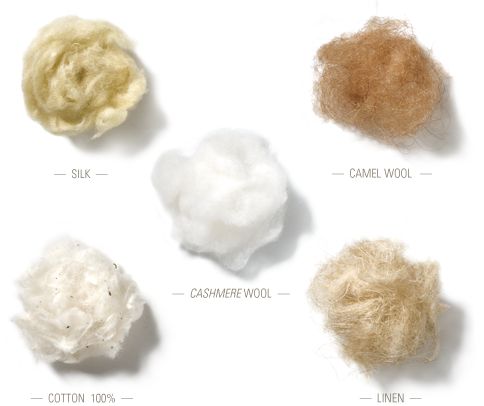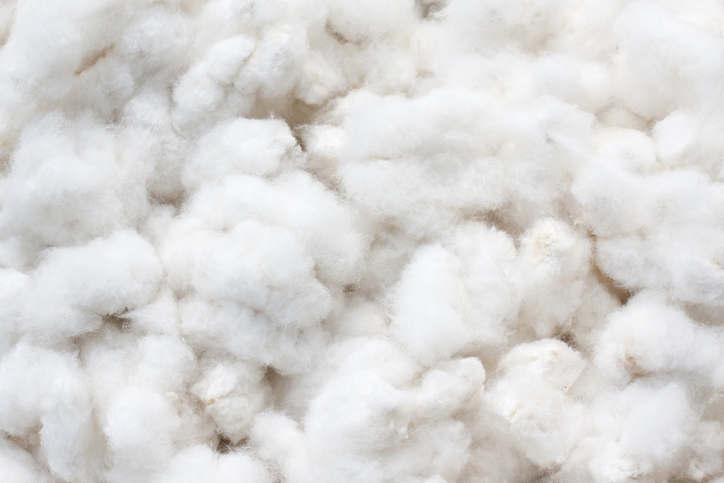As the name suggests, natural fabric comes from the fiber obtained from natural resources such as plants, animals, and minerals. To put it simply, threads procured from crops or animals undergo elaborate processes to come out as the finished product.

The use of naturally-occurring products to make clothing is not a new concept; rather, it’s an ancient practice. As revealed in the books of history, humans used natural items, like leaves to cover themselves up during the earliest civilizations.

However, natural fabric is thought to be around for millions of years. According to archeological artifacts, the first-ever processed clothing material was found in Turkey in 6500BC. The garment discovered was made of natural fibers.

Natural Fabric: Fibers to Fabric
Farmers and herders use massive lands to grow fiber-producing plants and domesticate animals. Next, the organic filaments are gathered, cleaned, and bleached.
Once that’s done, the produce left is sent to relevant mills to be made into yarns. The secured yarns then go through a number of different processes, such as weaving, dyeing, etc., to get the finished look.

Fibers Used In Natural Fabrics
Fibers obtained from animals primarily come from the skin/coat and are protein-based, whereas those taken from plants are cellulose-based. The cellulose-based filaments from plants come from different parts of a tree/shrub, including stems, roots, leaves, and fruits.
While most of the fibers derived from animals are extracted from the coat, silk fibers come from the cocoon housing silkworms.
Popular Natural Fabrics
Here is a quick rundown of the most commonly used natural fabrics
Silk
Silk is considered one of the most luxurious and most refined yarn goods in the world of textiles. Its production involves securing silk filaments from the cocoons inhabiting silkworms that are wound on a reel and made into sheets of fabric.
Natural fabrics are generally preferred by the eco-conscious as they do not adversely impact the environment. However, in the case of silk, thousands of silkworms are killed during the production process when the worm-carrying cavities (cocoons) are boiled in hot water to obtain thread. This leads to the death of a vast number of silkworms, which is why many animal rights activists have raised objections over the cruel practice.
As a result, a modified process of making silk was introduced in which the cocoons aren’t boiled while the little critters are still inside. Once they have emerged, only then the silk cases are treated. The silk produced through the said procedure is called peace silk. However, there is no way to verify if the methods have changed as no certification authorities exist.

Wool
Wool is derived from the coat/fur of animals. Typically, wool is believed to come only from sheep, but that’s not the case. It is also obtained from llamas, alpacas, yaks, bison, and even camels.
Different types of wool are available globally; their difference comes from the source of wool fibers.

Cashmere
Famous for making scarfs and sweaters, cashmere is a kind of wool taken from goats native to the Gobi Desert and Central Asia. It is considered one of the most deluxe materials used in making knitwear. However, cashmere is not as warm as most other varieties of wool.

Linen
First discovered in Europe, linen comes from flax plants. The flax-based fibers used to produce are extracted from the stems of a flax plant.
Linen is primarily known for making homeware products such as draperies, table runners, etc. But it is also a popular material in the apparel industry.

Cotton
Cotton is arguably one of the most clothing materials used worldwide. It is made from the fibers acquired from cotton plants. The seeds of a cotton plant turn round and fluffy once they mature, after which they are used to extract fibers to make cotton.
India and China are the two of the biggest exporters of cotton, followed by America.

Rayon
Although rayon is made from cellulose-based natural fibers, it is a semi-synthetic fabric. The fibrous strings used to make the said textile are curated from wood pulp and then treated with different chemicals, hence the semi-status.
Rayon is an impressively versatile fabric as it can assume the characteristics of different textiles, such as wool and cotton.

Modal
Like rayon, modal is also semi-synthetic, and its fibers are cultivated from the wood pulp of beech trees. It is a plant-based material, which is often referred to as a type of rayon.
Modal textile is a popular choice when it comes to making undergarments and household draperies.

Bamboo
Fabric produced from the cellulose taken from bamboo plants is called bamboo fabric. It has various varieties based on the production method. However, the cheapest and most popular kind is bamboo viscose.

Advantages of Natural Fabrics
Natural fabrics offer many benefits to users, such as durability, biodegradability among others. But the most significant advantages of natural materials are to the human skin and environment.
To The Environment
Unlike synthetic textiles, natural fabrics production does not require chemical compounds that release toxic gases into the atmosphere.
On top of that, they are easy to decompose once utilized thoroughly. They also require minimal energy for production, unlike synthetic fabrics.
Using natural fabric also reduces water pollution. Every time you wash a synthetic cloth, it releases millions of plastic microfibers that flow into the sea and contaminate the water. On the contrary, natural textiles do not discharge any harmful substances when washed.

To The Skin
Natural fabrics are hydrophilic-meaning they have high water absorbing capacity. This, combined with their moisture-wicking ability, keeps the skin dry as any sweat released by the body is immediately absorbed by the natural garment and wicked away.
Furthermore, natural textiles are hypoallergenic, which means they do not cause or flare allergies, unlike many synthetic materials, such as polyester. This is particularly beneficial for those with sensitive skin as they can save their skin from getting irritated or developing rashes by using natural fabrics.

Natural Fabric VS synthetic fabric
A quick comparison between natural and synthetic fabrics
Ethical Practices and Sustainability
The textile industry is known to have pretty inhuman working environments for its employees, which holds true for both types of productions. Be it the making of natural fabrics or the production of synthetic textiles, both involve dangerous working conditions, labor exploitation, and long working hours. In some countries, such factories also practice forced labor hiring, such as in Uzbekistan.
In terms of sustainability, producing natural textiles is much better as it uses a renewable resource that can be regrown. Therefore, it is much easier to keep the production rolling for a long while. On the other hand, synthetic materials need mostly non-renewable chemicals.
Biodegradability
Synthetic garments are not easy to dispose of, whereas natural fabrics can be easily decomposed without harming the environment. Moreover, the latter can be recycled and reused, making it a far better choice than the former.





 English
English German
German French
French Russian
Russian Spanish
Spanish Japanese
Japanese Korean
Korean Portuguese
Portuguese Ukrainian
Ukrainian Arabic
Arabic Italian
Italian











Leave A Comment